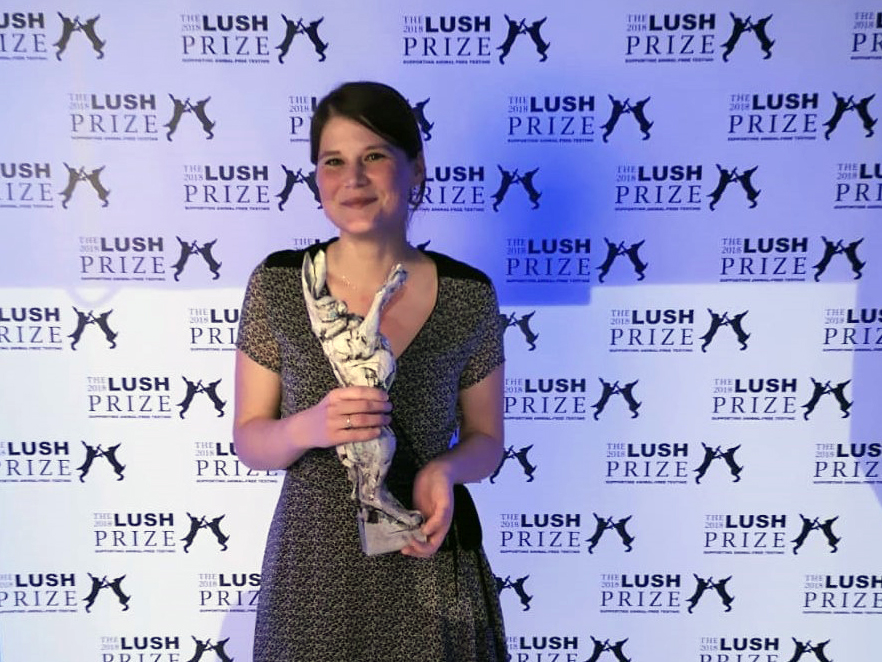Lush hails an innovative 3D in vitro lung model
Published on 19/11/2018
On Friday 16 November 2018, at the Lush Prize Awards ceremony in Berlin, Germany, Aline Chary, an engineer in cellular biology at the Luxembourg Institute of Science and Technology (LIST), received one of the Lush Prizes in the "Young Researchers – Rest of the World" category. Thanks to her work on a three-dimensional in vitro lung model, Aline Chary was picked from more than ten finalists to receive the €10,000 prize, the purpose of which is to enable her to pursue a career in non-animal experimentation.
A model that will eradicate the use of animal testing
This accolade from the Lush cosmetics company is a reward for long years of research, which made it possible to develop an innovative model that enables industry to test for the respiratory sensitization of products without using tests on animals. The technology was developed by Aline Chary as part of her PhD thesis, which she pursued at LIST from 2013 to 2017 in partnership with the University of Trier, Germany.
At LIST, Aline Chary was supported in her research by the environmental health team. This team focuses on assessing the effects of exposure to pollutants and developing tools for hazard assessment, and it has proven expertise in the development of complex 3D in vitro models for risk assessment purposes.
Research made in Luxembourg
Working at the LIST laboratories in Belvaux, Aline Chary developed a three-dimensional in vitro lung model that makes it possible to assess the respiratory sensitization potential of inhalable chemical compounds. She achieved this remarkable feat by modifying and adapting an in vitro model that had been previously developed by LIST for other purposes, this time incorporating immune cells in order to target sensitization.
Four types of cells present in human beings were incorporated into the model: alveolar epithelial cells, endothelial cells, macrophages and dendritic cells. Via an exposure module, these cells are exposed to a cloud of chemical compounds at the air-liquid interface, which is similar to the way in which human beings are exposed to chemical compounds. Then several pre-identified markers make it possible to distinguish between chemical sensitizers and chemical irritants in the respiratory tract.
Marketing preparations are underway
The model developed in this way fills an existing gap in the product testing market. At the present time, no model that makes it possible to assess the respiratory sensitization potential of chemical compounds has been validated or even accepted. The model developed at LIST still needs to complete this same phase successfully for it to represent a real alternative to animal testing, and to enable industry to stop using animals in product tests once and for all.
The model has already proved to be promising, having been patented in late 2016. And the accolade gained at the 7th edition of the Lush Prize Awards reaffirms the potential and attractiveness of this model for the scientific community, which wants to increasingly distance itself from animal testing.
In addition, since July 2018, the work rewarded by Lush has been an integral part of the project, "Further development, validation and commercial exploitation of an advanced alveolar in vitro model for the prediction of respiratory sensitization", or VitralizeMe. Funded by the Luxembourg National Research Fund, VitralizeMe aims to prepare for the market launch of this model by June 2020. To achieve this, the researchers will have to tackle numerous phases, which will include submitting the model to the EU Reference Laboratory for alternatives to animal testing (EURL ECVAM) for official validation.
>> To find out more about VitralizeMe, visit the project webpage
>> For a deep insight into Aline's work, view the film presented during the Lush Prize Awards Ceremony:
Aline Chary - Young Researcher (Rest of World) from Lush Prize on Vimeo.







